Ospedale Maggiore Of Milan on:
[Wikipedia]
[Google]
[Amazon]
The Policlinico of Milan ( it, Policlinico di Milano) also known as Ospedale Maggiore di Milano or Ca' Granda Ospedale Maggiore Policlinico, is one of the oldest hospitals in Italy, founded by Duke Francesco Sforza in 1456. Today it is a modern hospital with 900 beds, with wards for adults, pregnant women and children. During the first COVID-19 breakout in March 2020, 300 of those beds were readapted for COVID-19 patients.
There are three emergency rooms for different categories of patients. The maternity ward (Mangiagalli Clinic) has the highest number of births in Lombardy.
The Foundation is a scientific Institute for Research, Hospitalization and Health Care (IRCCS), which means that, alongside clinical activity, it promotes research programs with predominantly translational purposes. The programs are concerned with the rapid transfer of therapies from the laboratory to patients.
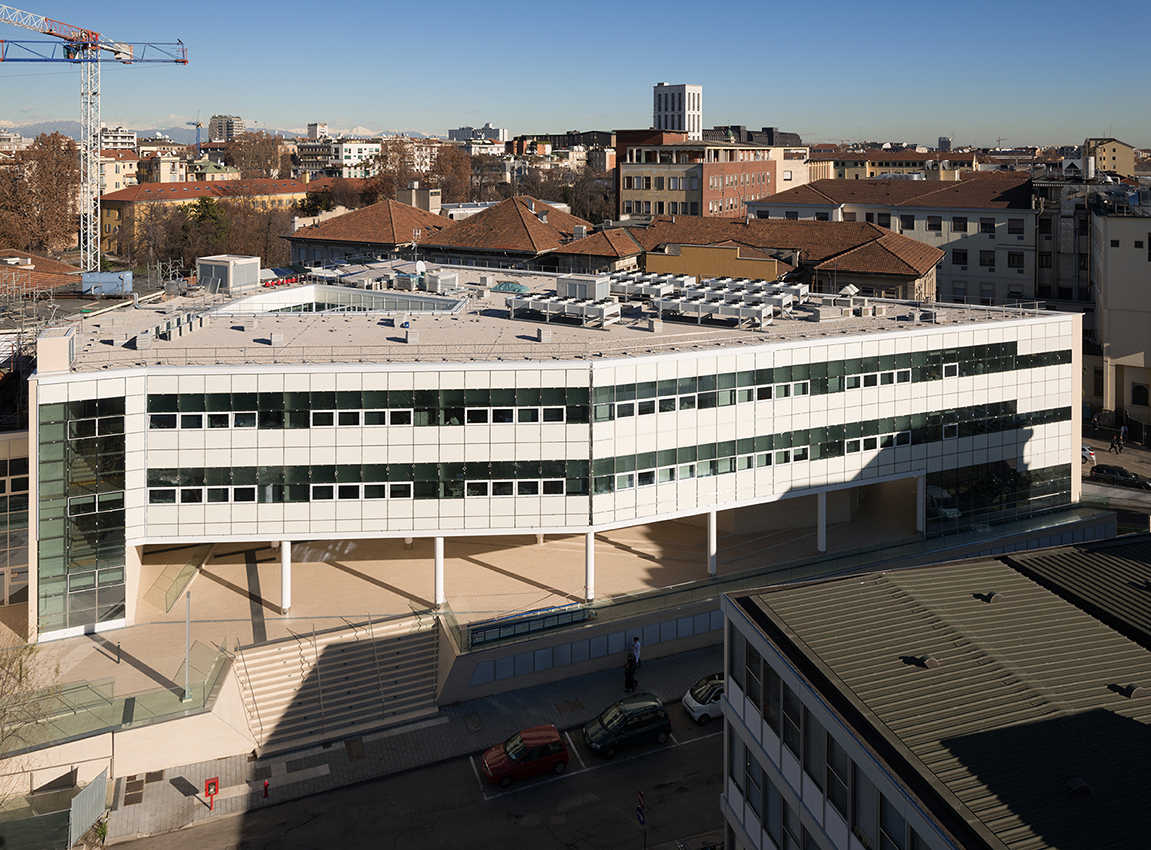
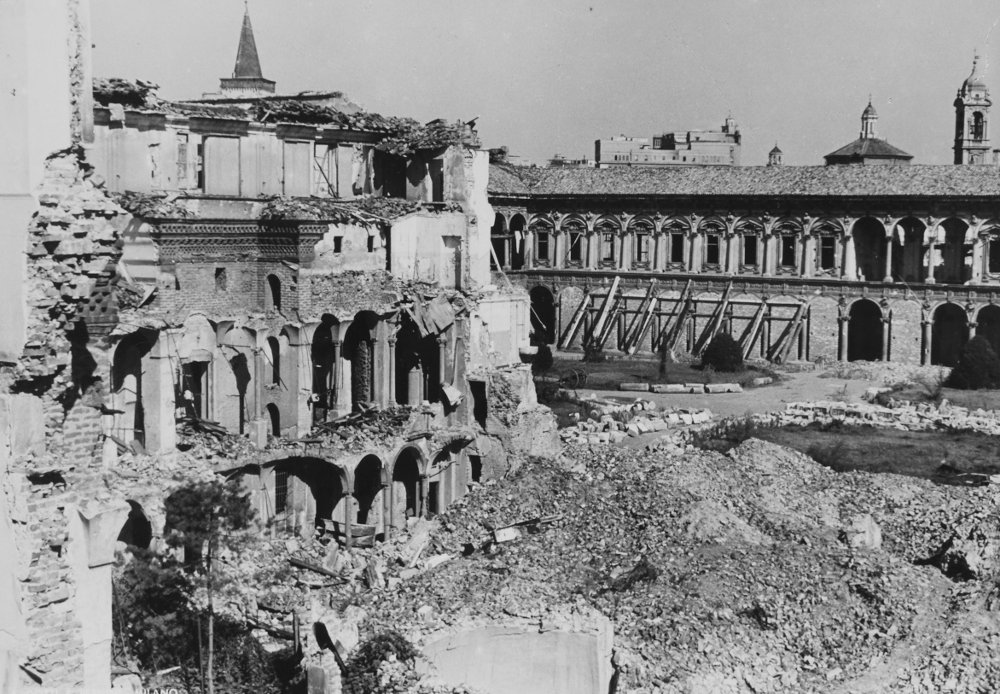 Entering Milan victorious on 25 March 1450 (the day of
Entering Milan victorious on 25 March 1450 (the day of 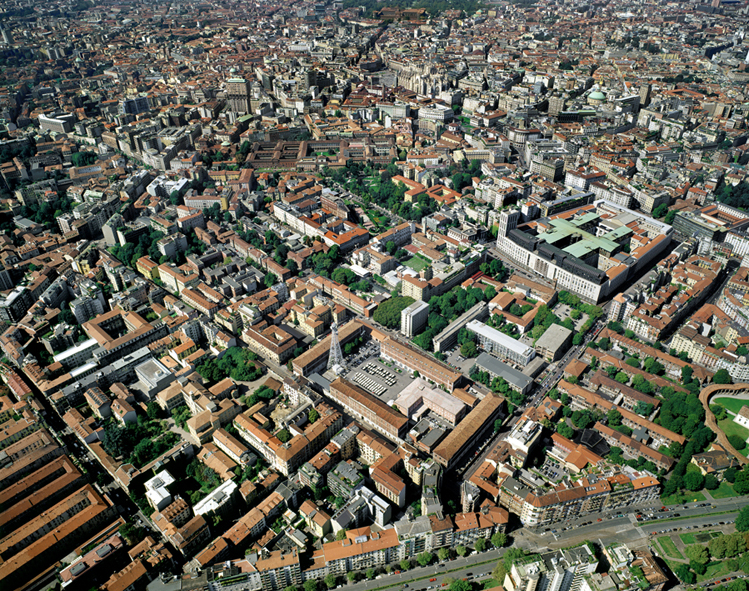 At the beginning of the 20th century, it was decided that the hospital would be moved to a location beyond the
At the beginning of the 20th century, it was decided that the hospital would be moved to a location beyond the 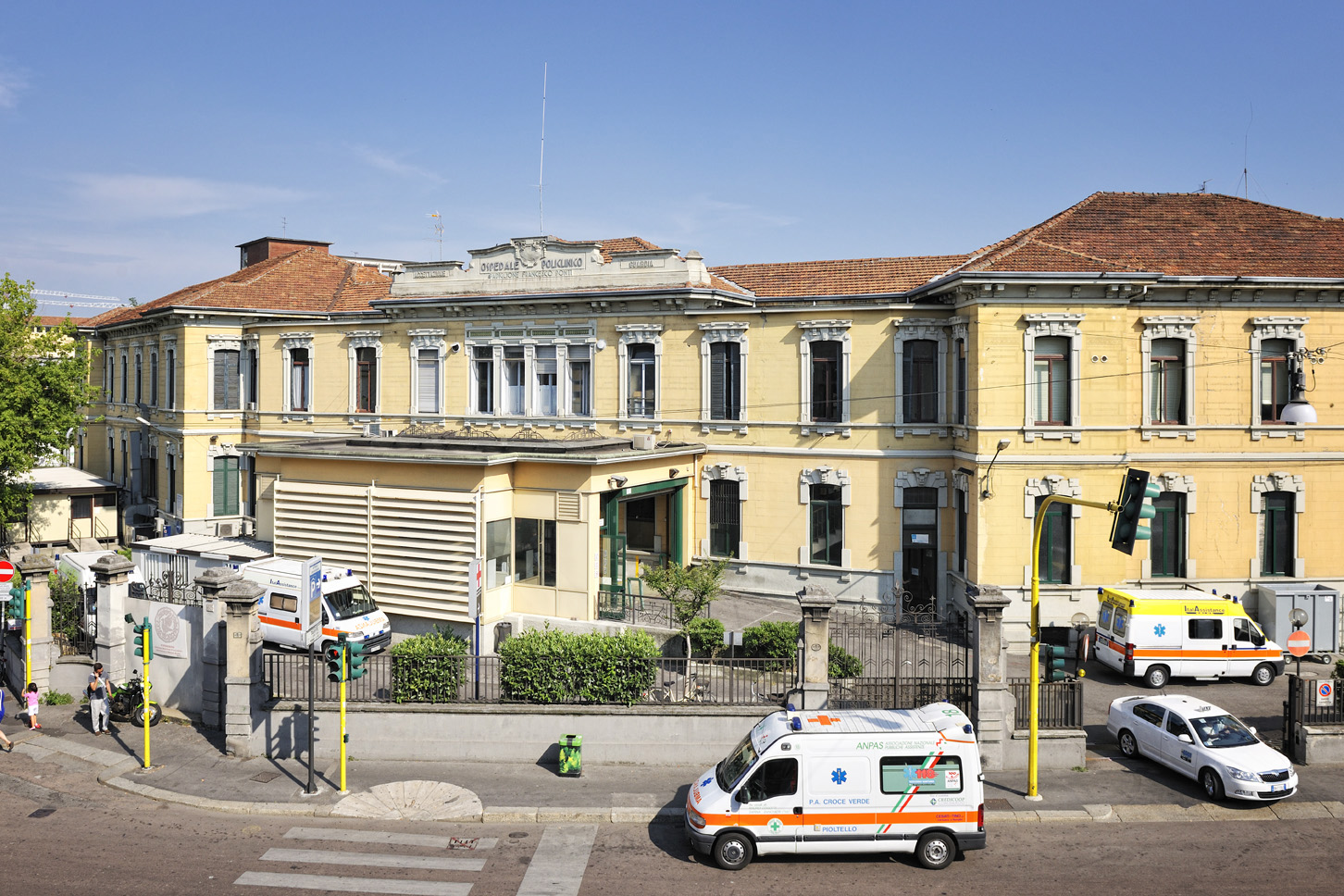 Further additions to the hospital institution included the San Carlo Borromeo di Milano (also designed by Giò Ponti) and the
Further additions to the hospital institution included the San Carlo Borromeo di Milano (also designed by Giò Ponti) and the
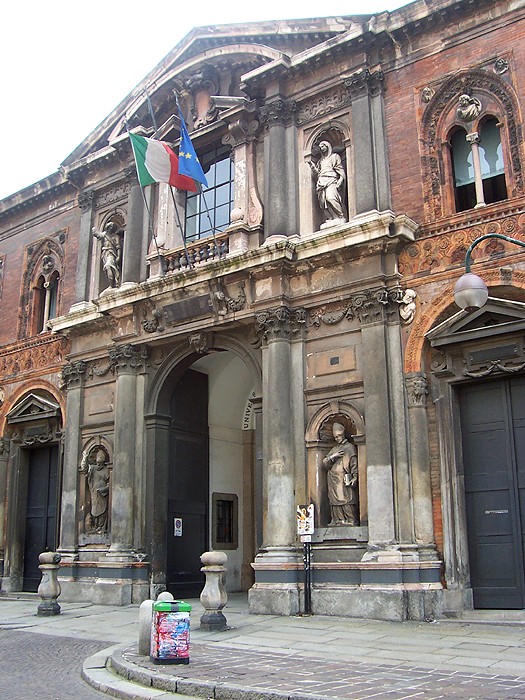 The organisation's insignia used to bear the scene of the Annunciation and the Latin motto 'ave gratiae plena' ("hail, full of grace"). Later it was simplified to a picture of the dove of the Holy Spirit.
The heraldic representation, still the basis of the Foundation's current logo, is closely linked with the Visconti symbol of the flaming, radiant turtle-dove. The olive branch in the bird's
The organisation's insignia used to bear the scene of the Annunciation and the Latin motto 'ave gratiae plena' ("hail, full of grace"). Later it was simplified to a picture of the dove of the Holy Spirit.
The heraldic representation, still the basis of the Foundation's current logo, is closely linked with the Visconti symbol of the flaming, radiant turtle-dove. The olive branch in the bird's
Official WebsiteNord Italia Transplant program (NITp)
 {{DEFAULTSORT:Policlinico of Milan
{{DEFAULTSORT:Policlinico of Milan
Organization
As of 2020: *President: Marco Giachetti (appointment 2019–2023) *General Director: Ezio Belleri *Administrative Director: Fabio Agrò *Medical Director: Laura Chiappa *Scientific Director: Fabio BlandiniHistory
In 1456 theDuke of Milan
The following is a list of rulers of Milan from the 13th century to 1814, after which it was incorporated into the Kingdom of Lombardy–Venetia by the Congress of Vienna.
Before elevation to duchy
Until 1259, Milan was a free commune that elect ...
, Francesco Sforza, founded the ''Magna Domus Hospitalis'' (''Ca' Granda''), a hospital dedicated to Annunciata (a municipality of the province of Brescia, Northern Italy). He did so primarily to gain the affection of its people, who were followers Milan's Visconti
Visconti is a surname which may refer to:
Italian noble families
* Visconti of Milan, ruled Milan from 1277 to 1447
** Visconti di Modrone, collateral branch of the Visconti of Milan
* Visconti of Pisa and Sardinia, ruled Gallura in Sardinia from ...
family, even though the Duke was married to Bianca Maria Visconti
Bianca Maria Visconti (31 March 1425 – 28 October 1468) was Duchess of Milan from 1450 to 1468 by marriage to Francesco I Sforza. She was regent of Marche during the absence of her spouse in 1448. She served as Regent of the Duchy of Milan duri ...
at the time.
 Entering Milan victorious on 25 March 1450 (the day of
Entering Milan victorious on 25 March 1450 (the day of Annunciation
The Annunciation (from Latin '), also referred to as the Annunciation to the Blessed Virgin Mary, the Annunciation of Our Lady, or the Annunciation of the Lord, is the Christian celebration of the biblical tale of the announcement by the ange ...
), the Duke decided to dedicate a charitable institution to Annunciata. It was then that the new foundation became the ''Spedale della Nunciata''. Designed by the renowned architect Filarete and built by the engineer Guiniforte Solari
Guiniforte Solari (c. 1429 – c. 1481), also known as ''Boniforte'', was an Italian sculptor, architect and engineer.
Born in Milan, he was the son of the architect Giovanni Solari, and brother of Francesco Solari.
Guiniforte was chief engineer ...
(responsible for the courtyard of the Certosa di Pavia, a monastery complex in Lombardy, Northern Italy), the hospital formed part of the completion of the reform of hospitals started by the Archbishop Rampini Rampini is a surname. Notable people with the surname include:
* Alessandro Rampini (1896–1995), Italian footballer
* Carlo Rampini (1891–1968), Italian footballer
*Federico Rampini (born 1956), Italian journalist, writer and lecturer
*Giacomo ...
in the years of the Golden Ambrosian Republic
,
it, Aurea Repubblica Ambrosiana
, era = Late Middle Ages
, government_type = Directorial republic
, p1 = Duchy of Milan
, flag_p1 = Flag of the Duchy of Milan (1450).svg
, s1 ...
.
The cloisters' completion and ornamentation were carried out by Giovanni Antonio Amadeo, Solari's son-in-law and pupil. Although the hospital was founded for the poor, it was from the outset a hospital where people with some hope of recovery were treated. Chronic diseases were treated in hospitals outside the city. For this reason the Ospedale Maggiore has always been the centre of health information in the city.
 At the beginning of the 20th century, it was decided that the hospital would be moved to a location beyond the
At the beginning of the 20th century, it was decided that the hospital would be moved to a location beyond the canal
Canals or artificial waterways are waterways or engineered channels built for drainage management (e.g. flood control and irrigation) or for conveyancing water transport vehicles (e.g. water taxi). They carry free, calm surface flow un ...
(where work had already been started on its expansion). This move coincided with the founding of the state University, which took over the old buildings of the Ca' Granda, where it remains today. The Ospedale Maggiore moved to a vast area between the streets of Francesco Sforza (the site of the canal
Canals or artificial waterways are waterways or engineered channels built for drainage management (e.g. flood control and irrigation) or for conveyancing water transport vehicles (e.g. water taxi). They carry free, calm surface flow un ...
), Porta Romana, Lamarmora and Commenda.
The obstetrics and gynaecology department was the first to be inaugurated, by Luigi Mangiagalli (the first Chancellor of the university), and the department still bears his name.
When the hospital moved it was decided that a general hospital would be created in the area of Niguarda (a neighbouring municipality, which had become part of Milan in 1923). This hospital was designed by Giò Ponti and inaugurated in 1932. It kept the name Ca' Granda, whilst the new general hospital took the name Ospedale Maggiore.
 Further additions to the hospital institution included the San Carlo Borromeo di Milano (also designed by Giò Ponti) and the
Further additions to the hospital institution included the San Carlo Borromeo di Milano (also designed by Giò Ponti) and the Sesto San Giovanni
Sesto San Giovanni (; lmo, Sest San Giovann, label=Western Lombard ), locally referred to as just Sesto ( lmo, Sest, links=no), is a ''comune'' in the Metropolitan City of Milan, Lombardy, northern Italy. Its railway station is the northernmost s ...
hospitals. The institution was later divided, giving autonomy to the different institutes, whilst others were founded independently and included later.
In 1909 the Adelina brothers and Marco De Marchi founded the ''Asilo per le madri povere legittime "Regina Elena"'' (Regina Elena Refuge for Poor Mothers), which remained an independent service until 1990. In 1957 it was converted into a specialist hospital and in 1968 it became the Regina Elena Institute of Obstetrics-Gynaecology and Paediatrics. From 1998 to 2004 the clinical Institutes of Faithful Improvement, Mangiagalli and Regina Elena were placed under the same authority
In the fields of sociology and political science, authority is the legitimate power of a person or group over other people. In a civil state, ''authority'' is practiced in ways such a judicial branch or an executive branch of government.''The N ...
.
In 2010 the name of the hospital was changed, reverting to the former Ca' Granda.
The university has hosted prominent medical doctors and experts including:
* Carlo Forlanini
Carlo Forlanini (11 June 1847 – 26 May 1918) was a medical doctor and professor at the Universities of Turin and Pavia. He was also the inventor of artificial pneumothorax, which was the primary treatment method of pulmonary tuberculosis for t ...
- inventor of artificial pneumothorax.
* Edoardo Porro - innovator of the caesarean section
Caesarean section, also known as C-section or caesarean delivery, is the surgical procedure by which one or more babies are delivered through an incision in the mother's abdomen, often performed because vaginal delivery would put the baby or mo ...
.
* Baldo Rossi - pioneer of emergency surgery.
* Luigi Mangiagalli - founder of ''Istituto Ostetrico Ginecologico.''
* Luigi Devoto
is a fictional character featured in video games and related media released by Nintendo. Created by Japanese video game designer Shigeru Miyamoto, Luigi is portrayed as the younger fraternal twin brother and sidekick of Mario, Nintendo's masc ...
- pioneer of occupational medicine
Occupational medicine, until 1960 called industrial medicine, is the branch of medicine which is concerned with the maintenance of health in the workplace, including prevention and treatment of diseases and injuries, with secondary objectives ...
.
Historical archive
Insignia and logo
beak
The beak, bill, or rostrum is an external anatomical structure found mostly in birds, but also in turtles, non-avian dinosaurs and a few mammals. A beak is used for eating, preening, manipulating objects, killing prey, fighting, probing for food ...
was added later. Until 1825 the Organisation had the duty of assisting children in need, who, considered as 'the hospital's children', took the surname
In some cultures, a surname, family name, or last name is the portion of one's personal name that indicates one's family, tribe or community.
Practices vary by culture. The family name may be placed at either the start of a person's full name ...
'Colombo', meaning 'dove'.
The Niguarda, Sesto San Giovanni and San Carlo Borromeo hospitals also obtained insignias or sculptures reminiscent of the dedication.
Banner
The hospital has two banners of honour: one large banner, maintained in a museum collection, and a pair of smaller banners for use in ceremonies. The need for a banner to display at ceremonies and funerals of benefactors arose in 1927, and inspiration was taken from the banner of theMunicipality of Milan
A municipality is usually a single administrative division having corporate status and powers of self-government or jurisdiction as granted by national and regional laws to which it is subordinate.
The term ''municipality'' may also mean the go ...
, which has particularly solemn connotations. The front of the banner represents the Annunciation
The Annunciation (from Latin '), also referred to as the Annunciation to the Blessed Virgin Mary, the Annunciation of Our Lady, or the Annunciation of the Lord, is the Christian celebration of the biblical tale of the announcement by the ange ...
. On the other side, the dove is embroidered, surrounded by the heraldic insignias of the hospital's main benefactors: Sforza
The House of Sforza () was a ruling family of Renaissance Italy, based in Milan. They acquired the Duchy of Milan following the extinction of the Visconti family in the mid-15th century, Sforza rule ending in Milan with the death of the last mem ...
, Macchi
Aermacchi was an Italian aircraft manufacturer. Formerly known as Aeronautica Macchi, the company was founded in 1912 by Giulio Macchi at Varese in north-western Lombardy as Nieuport-Macchi, to build Nieuport monoplanes under licence for the Ita ...
, Del Sesto, Parravicini Parravicini is an Italian surname. Notable people with the surname include:
* Benjamín Solari Parravicini (1898–1974), Argentine artist
*Florencio Parravicini (1876–1941), Argentine actor
*Francesco Parravicini
Francesco Parravicini (born 3 ...
, Ponti, Secco Comneno, the municipality of Milano, Pio II Piccolomini, Pio IV Medici di Marignano
Pio may refer to:
Places
* Pio Lake, Italy
* Pio Island, Solomon Islands
* Pio Point, Bird Island, south Atlantic Ocean
People
* Pio (given name)
* Pio (surname)
* Pio (footballer, born 1986), Brazilian footballer
* Pio (footballer, born 1988), B ...
, Pio XI Ratti, Cardinals Saint Carlo Borromeo e Schuster, and the Order of the Holy Sepulchre.
The project and its realisation were the responsibility of the Milanese architect Giò Ponti, who intended to add value to the banner using both materials and techniques. The metallic parts of the banner were created by the Ravasco firm, and Alfredo Ravasco, the company director, wanted to donate precious stones. Meanwhile, the Bartelli firm had completed the gold and silver embroidery on pure silk. The banner was inaugurated by Cardinal Ildefonso Schuster on 24 March 1935 (the first day of the Festival of Forgiveness) during a solemn function held in Milan's Duomo.
In 1938 a copy was made, in order to be able to transport it with ease with just two poles. The original was moved to a collection in 1942 and decorated with crystals by the Silvestri firm.
Book of Elena
At the beginning of the 19th century, the Milanese Carlo Ingnazio Busca brought a mummy in asarcophagus
A sarcophagus (plural sarcophagi or sarcophaguses) is a box-like funeral receptacle for a corpse, most commonly carved in stone, and usually displayed above ground, though it may also be buried. The word ''sarcophagus'' comes from the Greek ...
and a papyrus to Milan. Today, the mummy can be found at Sforza Castle, while the papyrus is housed in the Historical Archive of the General Hospital. It is not open to public viewing, but is reproduced digitally with infra-red reflectography
Infrared (IR), sometimes called infrared light, is electromagnetic radiation (EMR) with wavelengths longer than those of visible light. It is therefore invisible to the human eye. IR is generally understood to encompass wavelengths from around ...
thanks to an agreement with the University of Milan's Interdepartmental Centre of Infrared and Diagnostic Reflectography of Cultural Heritage, run by Professor Duilio Bertani.
The ancient Egyptian papyrus is called ''Libro per uscire dal giorno'' ("Book to leave the day") and reproduces the famous Book of the Dead
The ''Book of the Dead'' ( egy, 𓂋𓏤𓈒𓈒𓈒𓏌𓏤𓉐𓂋𓏏𓂻𓅓𓉔𓂋𓅱𓇳𓏤, ''rw n(y)w prt m hrw(w)'') is an ancient Egyptian funerary text generally written on papyrus and used from the beginning of the New Kingdom ...
, a series of formulae aimed to facilitate the soul on its last journey beyond the western horizon toward the afterlife. The scroll, almost seven metres long, was produced in Thebes for the scribe and designer Pthamose at the beginning of the nineteenth dynasty of Egypt
The Nineteenth Dynasty of Egypt (notated Dynasty XIX), also known as the Ramessid dynasty, is classified as the second Dynasty of the Ancient Egyptian New Kingdom period, lasting from 1292 BC to 1189 BC. The 19th Dynasty and the 20th Dynasty fur ...
(1305-1200 BC). It shows a complete text, full of drawings, and it mentions a series of formulae to activate several amulets, which is rare in similar papyri.
The heirs of the mummy had to decide what to do with this souvenir
A souvenir (), memento, keepsake, or token of remembrance is an object a person acquires for the memories the owner associates with it. A souvenir can be any object that can be collected or purchased and transported home by the traveler as a m ...
, and, taking advice from Dr. Pessani of the Ciceri-Agnesi Fatebenesorelle Hospital, they were persuaded to donate it to the institute's pharmacy (the mummy was in fact, at the time, considered to be a pharmacological remedy). The mummy then became part of the Civic Archaeological and Numismatic Collections
Civic is something related to a city or municipality. It also can refer to multiple other things:
General
*Civics, the science of comparative government
*Civic engagement, the connection one feels with their larger community
*Civic center, a comm ...
at Sforza Castle.
Departments
The Ospedale Maggiore General Hospital- Mangiagalli- Regina Elena Foundation, has two executive committees which are divided into separate departments. Ospedale Maggiore General Hospital Committee *''Zonda Department'': generalsurgery
Surgery ''cheirourgikē'' (composed of χείρ, "hand", and ἔργον, "work"), via la, chirurgiae, meaning "hand work". is a medical specialty that uses operative manual and instrumental techniques on a person to investigate or treat a pat ...
and transplants
Transplant or Transplantation may refer to:
Sciences
*Transplanting a plant from one location to another
*Organ transplantation, moving an organ from one body to another
*Transplant thought experiment, an experiment similar to Trolley problem
*Tra ...
*'' Monteggia Department'': surgery (head and neck)
*''Sacco Department'': radiology
Radiology ( ) is the medical discipline that uses medical imaging to diagnose diseases and guide their treatment, within the bodies of humans and other animals. It began with radiography (which is why its name has a root referring to radiat ...
, cardiology
Cardiology () is a branch of medicine that deals with disorders of the heart and the cardiovascular system. The field includes medical diagnosis and treatment of congenital heart defects, coronary artery disease, heart failure, valvular heart d ...
, lungs
The lungs are the primary organs of the respiratory system in humans and most other animals, including some snails and a small number of fish. In mammals and most other vertebrates, two lungs are located near the backbone on either side of th ...
*''Granelli-Marcora Department'': internal medicine, gastroenterology
Gastroenterology (from the Greek gastḗr- “belly”, -énteron “intestine”, and -logía "study of") is the branch of medicine focused on the digestive system and its disorders. The digestive system consists of the gastrointestinal tract ...
, endocrinology
Endocrinology (from '' endocrine'' + '' -ology'') is a branch of biology and medicine dealing with the endocrine system, its diseases, and its specific secretions known as hormones. It is also concerned with the integration of developmental event ...
, haematology
*''Litta Department'': the first to be built in the area beyond the Canal in 1895; it houses the Association of Italian Rescue Workers
Association may refer to:
*Club (organization), an association of two or more people united by a common interest or goal
*Trade association, an organization founded and funded by businesses that operate in a specific industry
*Voluntary associatio ...
*''Frigerio Department (Lamarmora)'': group practice
*''Beretta Neuro Department'': brain surgery
*''Ponti Department'': neurology
Neurology (from el, wikt:νεῦρον, νεῦρον (neûron), "string, nerve" and the suffix wikt:-logia, -logia, "study of") is the branch of specialty (medicine), medicine dealing with the diagnosis and treatment of all categories of co ...
*''Guardia Department'': A&E
*''Guardia II Department'':psychiatry
Psychiatry is the medical specialty devoted to the diagnosis, prevention, and treatment of mental disorders. These include various maladaptations related to mood, behaviour, cognition, and perceptions. See glossary of psychiatry.
Initial psych ...
*''Marangoni Department'': immunohaematology, transfusions and transplants
Transplant or Transplantation may refer to:
Sciences
*Transplanting a plant from one location to another
*Organ transplantation, moving an organ from one body to another
*Transplant thought experiment, an experiment similar to Trolley problem
*Tra ...
*''Bosisio Department'': pathology
Pathology is the study of the causes and effects of disease or injury. The word ''pathology'' also refers to the study of disease in general, incorporating a wide range of biology research fields and medical practices. However, when used in ...
Centers
The hospital hosts the following biological sample banks and centers:Milano Cord Blood Bank
The hospital hosts the Milano Cord Blood Bank, which has an inventory of 9,000umbilical cord blood
Cord blood (umbilical cord blood) is blood that remains in the placenta and in the attached umbilical cord after childbirth. Cord blood is collected because it contains stem cells, which can be used to treat hematopoietic and genetic disorders su ...
acquired from donations, which is used for more than 500 stem cell transplants in Italy and abroad.
Biobanca
The biobank contains about 200,000 samples of biological materials such as serum, cells, DNA and RNA. These samples are kept between -80 and 196 °C and used by about 23 research programmes.Bank of Rare Blood
Part of the Transfusional Center, the blood bank is concerned with identifying donors for rare blood groups, as well as coordinating and maintaining regional and national efforts with regards to obtaining units of rare blood groups for cases concerning complex pathologies.Cell Factory "Franco Calori"
Cell Factory "Franco Calori" is a GMP facility devoted to the production of cellular therapy products to be employed in experimental clinical protocols. It hosts research efforts mainly dedicated to the study of adult human stem cells, their potential and their differentiating capacity, and a GMP unit for cell manipulation authorized for production of products for advanced cell therapy.Nord Italia Transplant Program (NITP)
It is a collaborative organ donation and transplant program between the 5 regions of Italy and an Autonomous Province. Founded in 1972, the NITp is historically the first Italian organization in the field of transplants. It caters toover 20 million inhabitants inLombardy
Lombardy ( it, Lombardia, Lombard language, Lombard: ''Lombardia'' or ''Lumbardia' '') is an administrative regions of Italy, region of Italy that covers ; it is located in the northern-central part of the country and has a population of about 10 ...
, Liguria
Liguria (; lij, Ligûria ; french: Ligurie) is a Regions of Italy, region of north-western Italy; its Capital city, capital is Genoa. Its territory is crossed by the Alps and the Apennine Mountains, Apennines Mountain chain, mountain range and is ...
, Veneto
Veneto (, ; vec, Vèneto ) or Venetia is one of the 20 regions of Italy. Its population is about five million, ranking fourth in Italy. The region's capital is Venice while the biggest city is Verona.
Veneto was part of the Roman Empire unt ...
, Friuli-Venezia Giulia
(man), it, Friulana (woman), it, Giuliano (man), it, Giuliana (woman)
, population_note =
, population_blank1_title =
, population_blank1 =
, demographics_type1 =
, demographics1_footnotes =
, demographics1_t ...
, Marche
Marche ( , ) is one of the twenty regions of Italy. In English, the region is sometimes referred to as The Marches ( ). The region is located in the central area of the country, bordered by Emilia-Romagna and the republic of San Marino to the ...
and the Autonomous Province of Trento. The network manages the following centers:
* 93 units providing donors;
* 38 transplantation units (15 for kidney, 3 for kidney-pancreas, 9 for liver, 6 for heart, 4 for lungs and one for intestine) in 16 Hospitals;
* 5 regional coordinators and one from the Autonomous Province of Trento (CRR);
* 1 Interregional Reference Center (CIR).
The Interregional Reference Center (CIR) of this network is located at the IRCCS Foundation Ca Granda Ospedale Maggiore Policlinico, Complex Transplant Coordination Operative Unit.
The main functions of CIR, which operates operating 24/7, are:
* managing waiting lists for patients awaiting transplantation;
* collecting reports from potential organ donors and the verification of suitability and security;
* allocating of organs;
* performing immunologic examinations for donor-recipient compatibility.
Other biobanks
The hospital also hosts Bank of Donated Human Milk, a Biobank for the cryoconservation of seminal fluid and muscle tissue, peripheral nerve, DNA and cell culture which exchange valuable biological samples with National and International Institutes both for diagnostic and scientific research purposes.See also
* University of MilanReferences
External links
Official Website
 {{DEFAULTSORT:Policlinico of Milan
{{DEFAULTSORT:Policlinico of Milan
Maggiore Maggiore means "major" or "large" in Italian. It can refer to:
Locations and places
* Lake Maggiore, located at northwestern Italy and southern Switzerland
* Isola Maggiore, the second largest island on Lake Trasimeno, Umbria, Italy
* Fontana Maggi ...
Hospital buildings completed in 1932
Renaissance architecture in Milan
University of Milan
Hospital buildings completed in the 15th century
Maggiore Maggiore means "major" or "large" in Italian. It can refer to:
Locations and places
* Lake Maggiore, located at northwestern Italy and southern Switzerland
* Isola Maggiore, the second largest island on Lake Trasimeno, Umbria, Italy
* Fontana Maggi ...